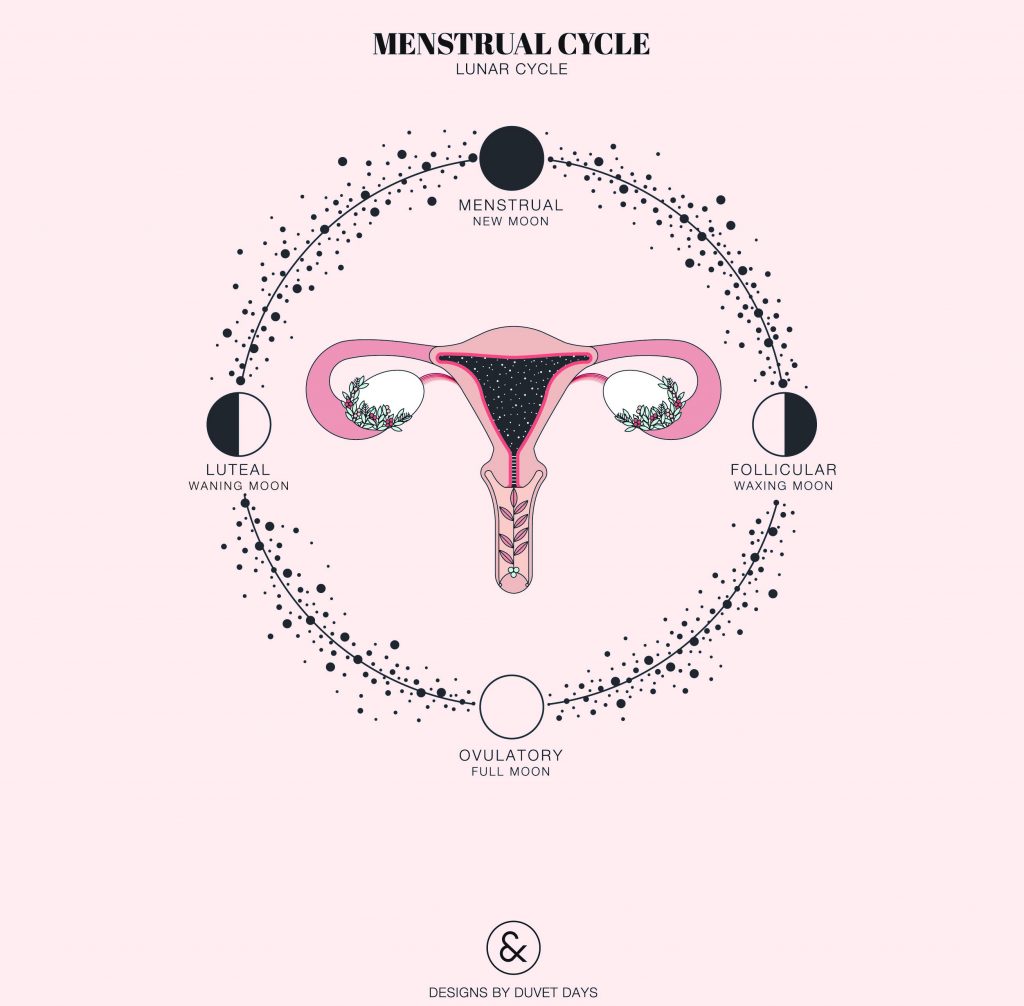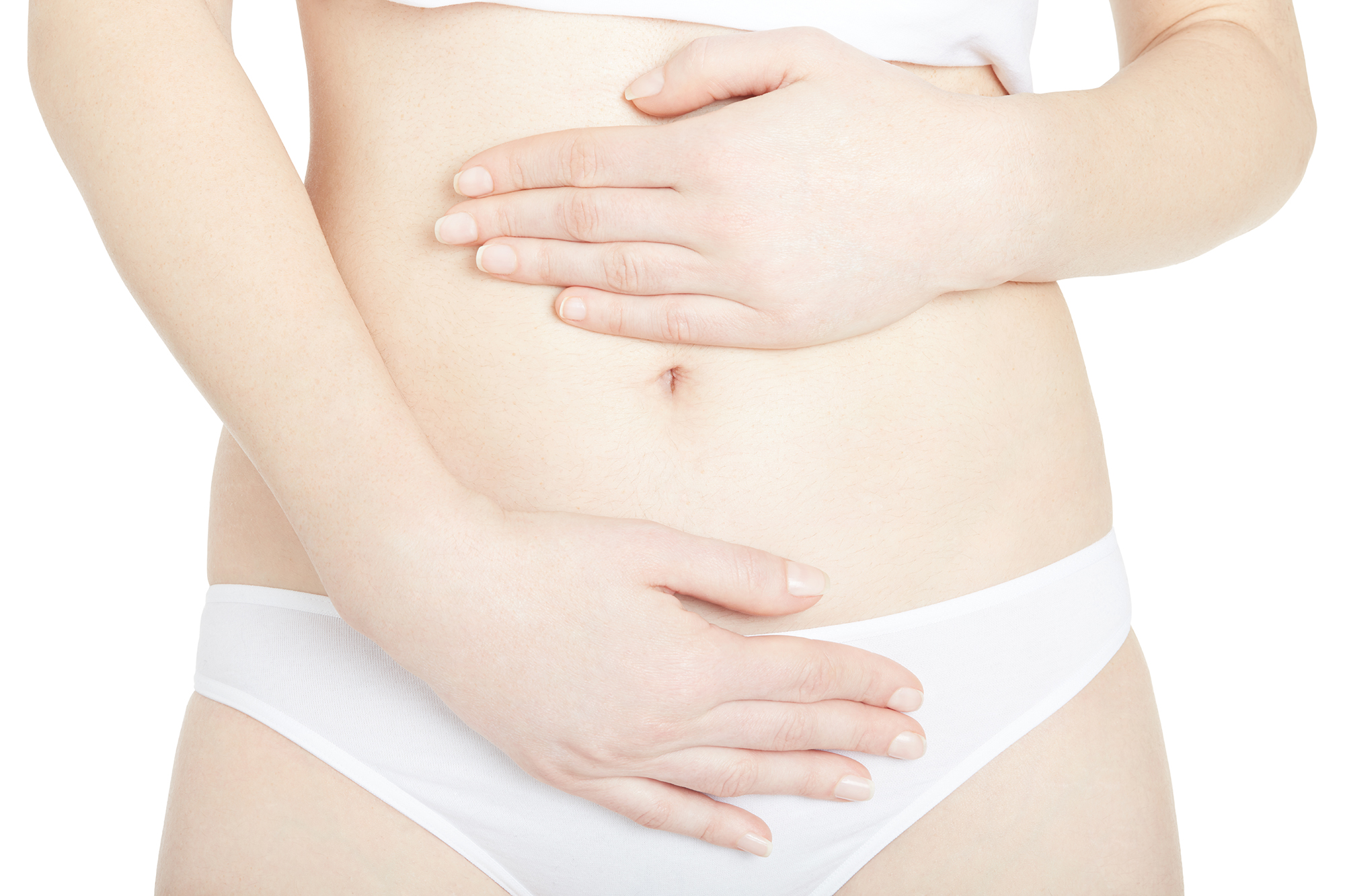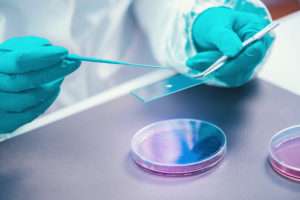Did you know the menstrual cycle doesn’t end when the bleeding stops? While you’re counting down the days until you can live free of pain and a bloody mess, your body is prepping for more acrobatics.
There are four phases of the menstrual cycle:
- menstrual phase
- follicular phase
- ovulation phase
- luteal phase
The length of each phase will vary and can change over time.
Menstrual phase (aka your period)
The menstrual cycle kicks off with the shedding of the uterine lining. This means the egg from your last menstrual cycle hasn’t been fertilized, and so no baby on board. Your oestrogen and progesterone levels have dropped and you’re feeling much like a bloody mess! Inside and out.
Without the formation of a fetus, your uterus doesn’t need the thickened lining that develops throughout the month. So, like any smart, independent bodily organ, it kicks it to the curb by shedding it through the vagina. The result is your bloody period.
This process generally takes about 3 to 7 days, but will vary for all woman and for different reasons. Using certain types of birth control can also impact period length and symptoms.
Us women will suffer widely different symptoms. If you experience extreme period discomfort, talk to your doc and grab a referral to your trusted gynaecologist.
Follicular phase:
The follicular phase overlaps with the menstrual phase and begins on the first day of your period.
Our bodies have hormones that instruct the ovaries to make small sacs (follicles) Inside each follicle lies a tiny, immature egg
.Only one egg of the pack will typically reach maturity. In rare cases, two eggs might mature. The leftover follicles are reabsorbed into the body.
The healthy follicle leads to an estrogen spike that thickens the lining of the uterus, creating a nutrient-rich environment for an embryo to grow. This phase typically lasts from 11 to 27 days, or an average of about 16 days.
Ovulation: PRIME preggers time *be on alert if not trying to conceive!
Ovulation signals to your body that it’s baby-making time. This happens when hormonal changes tell the ovaries to release a mature egg..Whether you want to get pregnant or are avoiding it, here are some ways to tell if you’re ovulating:
• Your basal temp has risen slightly. Your basal temperature refers to your “normal” body temperature. Keeping tabs on it takes patience but can help pinpoint peak fertility. In order to boost accuracy, chat to your gynae about how best to achieve optimal results
During ovulation you will have a thicker, stickier discharge. If your discharge has taken on an egg-white texture with a white or yellow color, you’re probably pretty fertile. Low-fertility fluid is much less viscous and usually clear.
Finally –
Sperm can survive in the body for up to 5 days, so you’re not necessarily protected from pregnancy if you have sex outside of the ovulation phase. To avoid pregnancy, always use birth control! If you get pregnant, your body produces human chorionic gonadotropin (hCG), which pregnancy tests detect. If you don’t get pregnant, the corpus luteum reabsorbs into the body and hormones level out again.
Some common problems to know about:
There are several factors that can impact a regular menstrual cycle, including:
- Physical activity. Regular heavy exercise might cause missed periods.
- The pill. While the pill typically makes periods more regular, it may take a few months. If you don’t take it consistently, it can also cause spotting.
- Prescription drugs. Certain prescription drugs, like thyroid medication, antipsychotics, or steroids can impact your cycle.
- Stress. Surges in stress can sometimes lead to irregular or missed periods.
- Smoking. Smoking can impact the levels of progesterone, estrogen, and testosterone in the body, which could mess with your cycle.
- Weight. Fluctuating weight might impact your menstrual cycle. Significant weight loss can lower estrogen levels, while weight gain can increase it.
While no two menstrual cycles are alike, significant abnormalities or changes may require medical attention.
Here are a few signs a trip to the doctor is in order:
- Irregular or absent periods. Periods are considered irregular when they happen over 38 days apart or less than 24 days apart. Use a period app or a regular old calendar to ensure you’re on track.
- Very painful cramps. Though it’s no fun, a little bit of cramping is normal. If your cramps feel debilitating or extreme, though, talk to your doctor. Severe cramps might signal the presence of endometriosis.
- A persistent, heavy flow. Some people have light flows; others bleed a lot. In general, though, if you need to change a tampon within 2 hours, your menstrual cup every 2 to 4 hours, or have blood clots larger than a quarter, seek support. Heavy bleeding could signal PCOS.
- Extreme fatigue. If you feel a little sore and sluggish during your period, you’re definitely not alone. If your cycle causes debilitating fatigue though, it might be a sign of anemia or another issue.





